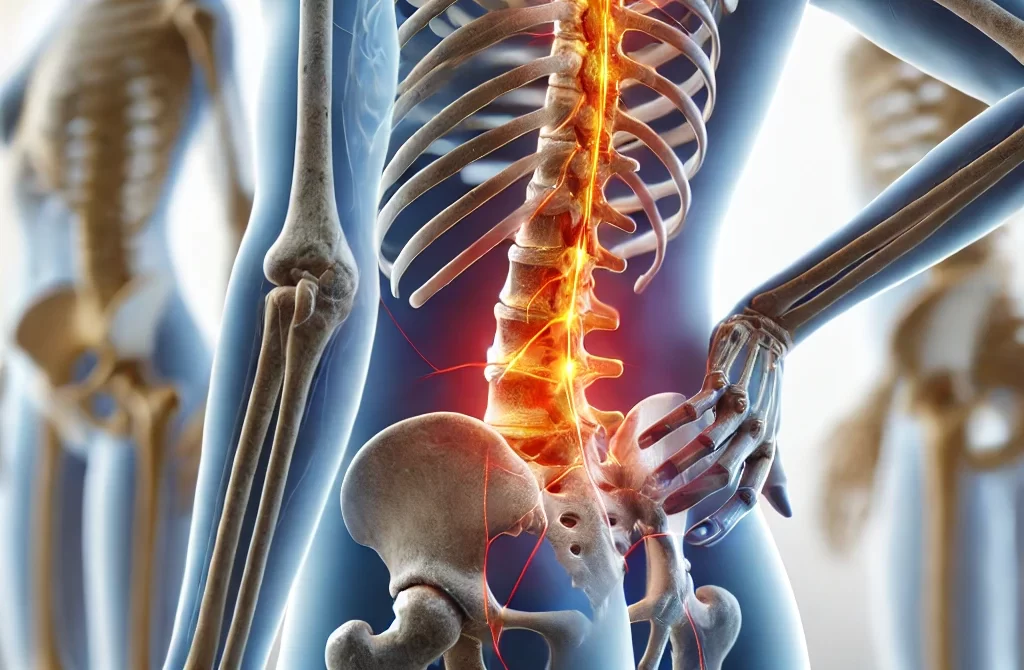Ankylosing Spondylitis: Causes, Symptoms, and Management
Ankylosing spondylitis is a chronic condition that primarily affects the spine, causing inflammation that can lead to the fusion (joining) of the vertebrae, resulting in reduced flexibility (ankylosis). It often starts in teenagers or young adults, with most diagnoses occurring in individuals in their 20s.
Causes of Ankylosing Spondylitis
The exact cause of ankylosing spondylitis is unknown. However, there is a genetic link involving the HLA-B27 gene. While about 8% of people carry this gene, not everyone with it develops ankylosing spondylitis.
Symptoms of Ankylosing Spondylitis
Symptoms can vary and develop gradually over months or years. Common symptoms include:
- Arthritis: Pain, tenderness, and swelling in the joints.
- Enthesitis: Inflammation where a tendon or ligament attaches to a bone, often in the heel, ribs, or elbow.
- Pain and Swelling: Affects other parts of the body, such as the hips, knees, and ribs.
- Fatigue: Severe tiredness that does not improve with rest.
- Lower Back Pain: Often more intense in the early morning.
- Morning Stiffness: Lasting at least 30 minutes and improving with activity.
- Pain That Worsens with Rest: Back pain that improves with exercise but worsens with inactivity.
- Night Pain: Waking up regularly due to pain.
- Buttock Pain: Discomfort in the lower back and buttock area.
When to Contact Your GP
You should see a healthcare professional if you experience:
- Lower back pain lasting more than 3 months.
- Morning stiffness that lasts over 30 minutes and occurs before age 40.
- Back pain that improves with exercise but worsens with rest.
Diagnosing Ankylosing Spondylitis
Diagnosis can be challenging as symptoms develop slowly and back pain is common. It may involve:
- Medical History: Your GP will ask about your symptoms, when they began, and how long they’ve lasted.
- Tests:
- Blood Tests: To detect inflammation.
- X-rays: Of the lower back and pelvis.
- Rheumatologist Referral: For specialized testing, which may include:
- MRI or Ultrasound Scans
- Genetic Testing (HLA-B27 gene presence)
Treatment for Ankylosing Spondylitis
While there is no cure, treatment can relieve symptoms and slow disease progression. Options include:
1. Exercise and Physiotherapy
- Exercise Programs: Tailored by a physiotherapist, may include group or individual sessions.
- Hydrotherapy: Exercises in a warm pool to ease movement and relax muscles.
- Daily Stretching: Helps maintain flexibility.
Consult your physiotherapist or rheumatologist about any new exercise programs.
2. Medication
- Pain Relief: Anti-inflammatory medications to reduce pain and swelling.
- Biologics: For more severe symptoms, your doctor may recommend advanced medications.
3. Surgery
In rare cases, if joints become severely damaged, joint replacement surgery may be recommended to improve mobility and reduce pain.
Living with Ankylosing Spondylitis
Most people can continue their daily activities with minimal changes, but adjustments may be needed over time.
Work Adjustments
- Ergonomic Changes: To improve posture and reduce fatigue.
- Breaks: Regular movement breaks can help ease symptoms.
- Open Dialogue: Discuss modifications with your employer.
Complications
- Reduced Spine Flexibility: Due to vertebral fusion.
- Joint Damage
- Osteoporosis: Increased risk of bone loss.
- Spinal Fractures
- Eye Problems (Iritis): Swelling, redness, sensitivity to light.
- Cardiovascular Disease: Higher risk of CVD.



 4.1 Attribution Theory and Person Perception: Why We Judge People the Way We Do (Even When We’re Totally Wrong) Let’s be honest. We’ve all
4.1 Attribution Theory and Person Perception: Why We Judge People the Way We Do (Even When We’re Totally Wrong) Let’s be honest. We’ve all



